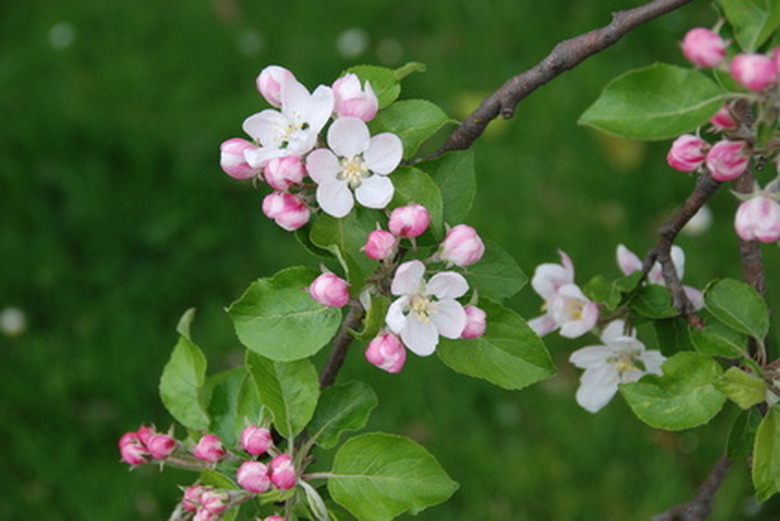Crabapple Tree Identification
The crab apple tree is part of the Rosaceae family, which also includes the rose. The scientific name of this tree is Malus sylvestris. Crab apples originated in the British Isles, and more than 700 varieties are spread over 35 species. Even though crab apples have a large range, they all have similar characteristics, which makes their identification easy.
Identification
Crab apple trees grow wild along river banks, near hedges and woodlands. They need nutrient-rich soil with high levels of alkaline or lime and are found in areas providing direct sunlight and lots of moisture. Crab apple trees resemble other apple trees but are small, from 6 to 50 feet tall, reaching an average height of 25 feet. They also resemble large bushes if they produce multiple trunks or shoots. They have a gray and rough, scaly bark, and older crab apple trees' bark has cracks.
- The crab apple tree is part of the Rosaceae family, which also includes the rose.
- Crab apple trees resemble other apple trees but are small, from 6 to 50 feet tall, reaching an average height of 25 feet.
Leaves
Leaves of the crab apple tree alternate on branches as opposed to being opposite to each other. The leaves fall each autumn and return in the spring. Their shape can be either round or oval, but they all have pointed tips and alternating veins. Rough on top and smooth on bottom, the leaves are dark green and never change color, even in autumn.
Blossoms
Crab apple blossoms start out as reddish-brown buds that appear in April or May. The buds are egg-shaped with multiple overlapping scales yielding blossoms with five petals. Their color is mainly white with a pink tint, and the blossoms are not as bright or colorful as other fruit tree blossoms.
- Leaves of the crab apple tree alternate on branches as opposed to being opposite to each other.
- Rough on top and smooth on bottom, the leaves are dark green and never change color, even in autumn.
Fruit
The apples of crab apple trees look like green or yellow cherries. With a diameter of 2 inches or less, they are smaller than dwarf apples. Like cherries, the stem is long compared to the size of the fruit. Crab apples have a sour taste and bite.
Uses
Crab apple trees are mainly used as ornamental landscaping. These trees are often planted as borders along waterways, walks and roadways to show off their flowers. The crab apples themselves can be used in baking when a tart taste is desired.
- The apples of crab apple trees look like green or yellow cherries.
Geography
Crab apple trees are found in the northern half of the world. Places such as North America, Asia and Europe have an abundant supply of these trees.
